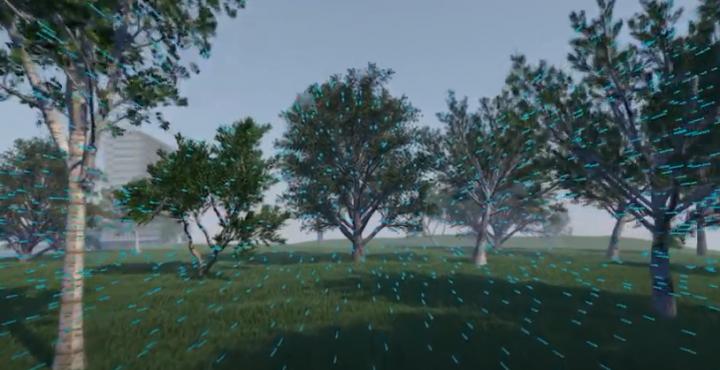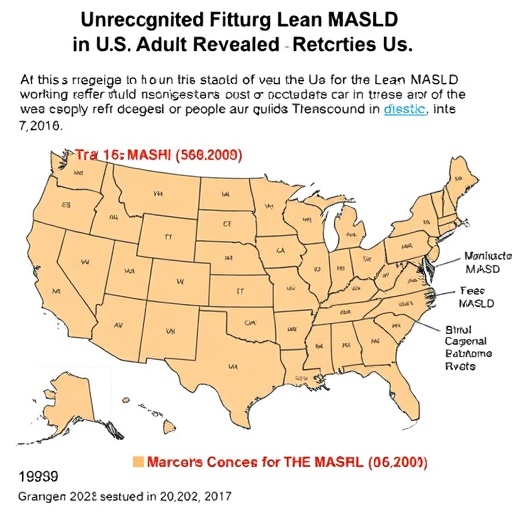
Credit: MAVLab/ TU Delft
If you ever saw a honeybee hopping elegantly from flower to flower or avoiding you as you passed by, you may have wondered how such a tiny insect has such perfect navigation skills. These flying insects’ skills are partially explained by the concept of optical flow: they perceive the speed with which objects move through their field of view. Robotics researchers have tried to mimic these strategies on flying robots, but with limited success. A team of TU Delft and the Westphalian University of Applied Sciences researchers therefore present an optical flow-based learning process that allows robots to estimate distances through the visual appearance (shape, color, texture) of the objects in view. This artificial intelligence (AI)-based learning strategy increases the navigation skills of small flying drones and entails a new hypothesis on insect intelligence. The article is published today in Nature Machine Intelligence.
How do honeybees land on flowers or avoid obstacles? One would expect such questions to be mostly of interest to biologists. However, the rise of small electronics and robotic systems has also made these questions relevant to robotics and Artificial Intelligence (AI). Small flying robots for example are extremely restricted in terms of the sensors and processing that they can carry onboard. If these robots are to be as autonomous as the much larger self-driving cars, they will have to use an extremely efficient type of artificial intelligence – similar to the highly developed intelligence possessed by flying insects.
Optical flow
One of the main tricks up the insect’s sleeve is the extensive use of ‘optical flow’: the way in which objects move in their view. They use it to land on flowers and avoid obstacles or predators. Insects use surprisingly simple and elegant optical flow strategies to tackle complex tasks. For example, for landing honeybees use the optical flow “divergence”, which captures how quickly things get bigger in view. If a honeybee were to fall to the ground, this divergence would keep increasing, with for example the grass becoming bigger in view ever faster. However, while landing honeybees employ a strategy of keeping the divergence constant by slowing down. The result is that they make smooth, soft landings.
“Our work on optical flow control started from enthusiasm about the elegant, simple strategies employed by flying insects” says Guido de Croon, professor of Bio-inspired Micro Air Vehicles and first author on the article. “However, developing the control methods to actually implement these strategies in flying robots turned out to be far from trivial. For example, our flying robots would not actually land, but they started to oscillate, continuously going up and down, just above the landing surface.”
Fundamental limitations
Optical flow has two fundamental limitations that have been widely described in the growing literature on bio-inspired robotics. The first is that optical flow only provides mixed information on distances and velocities – and not on distance or velocity separately. To illustrate, if there are two landing drones and one of them flies twice as high and twice as fast as the other drone, then they experience exactly the same optical flow. However, for good control these two drones should actually react differently to deviations in the optical flow divergence. If a drone does not adapt its reactions to the height when landing, it will never arrive and start to oscillate above the landing surface. Second, for obstacle avoidance it is very unfortunate that in the direction in which a robot is moving, the optical flow is very small. This means that in that direction, optical flow measurements are noisy and hence provide very little information on the presence of obstacles. Hence, the most important obstacles – the ones that the robot is moving towards – are actually the hardest ones to detect!
Learning visual appearance as the solution
“We realized that both problems of optical flow would disappear if the robots were able to interpret not only optical flow, but also the visual appearance of objects in their environment”, adds Guido de Croon. “This would allow robots to see distances to objects in the scene similarly to how we humans can estimate distances in a still picture. The only question was: How can a robot learn to see distances like that?”
The key to this question lay in a recent theory devised by De Croon, which showed that flying robots can actively induce optical flow oscillations to perceive distances to objects in the scene. In the approach proposed in the Nature Machine Intelligence article the robots use such oscillations in order to learn what the objects in their environment look like at different distances. In this way, the robot can for example learn how fine the texture of grass is when looking at it from different heights during landing, or how thick tree barks are at different distances when navigating in a forest.
Relevance to robotics and applications
“Learning to see distances by means of visual appearance led to much faster, smoother landings than we achieved before”, says Christophe De Wagter, researcher at TU Delft and co-author of the article. “Moreover, for obstacle avoidance, the robots were now also able to see obstacles in the flight direction very clearly. This did not only improve obstacle detection performance, but also allowed our robots to speed up.” The proposed methods will be very relevant to resource-constrained flying robots, especially when they operate in a rather confined environment, such as flying in greenhouses to monitor crop or keeping track of the stock in warehouses.
Relevance to biology
The findings are not only relevant to robotics, but also provide a new hypothesis for insect intelligence. “Typical honeybee experiments start with a learning phase, in which honeybees exhibit various oscillatory behaviors when they get acquainted with a new environment and related novel cues like artificial flowers”, says Tobias Seidl, biologist and professor at the Westphalian University of Applied Sciences. “The final measurements presented in articles typically take place after this learning phase has finished and focus predominantly on the role of optical flow. The presented learning process forms a novel hypothesis on how flying insects improve their navigational skills, such as landing, over their lifetime. This suggests that we should set up more studies to investigate and report on this learning phase.”
###
Media Contact
Guido de Croon
[email protected]




